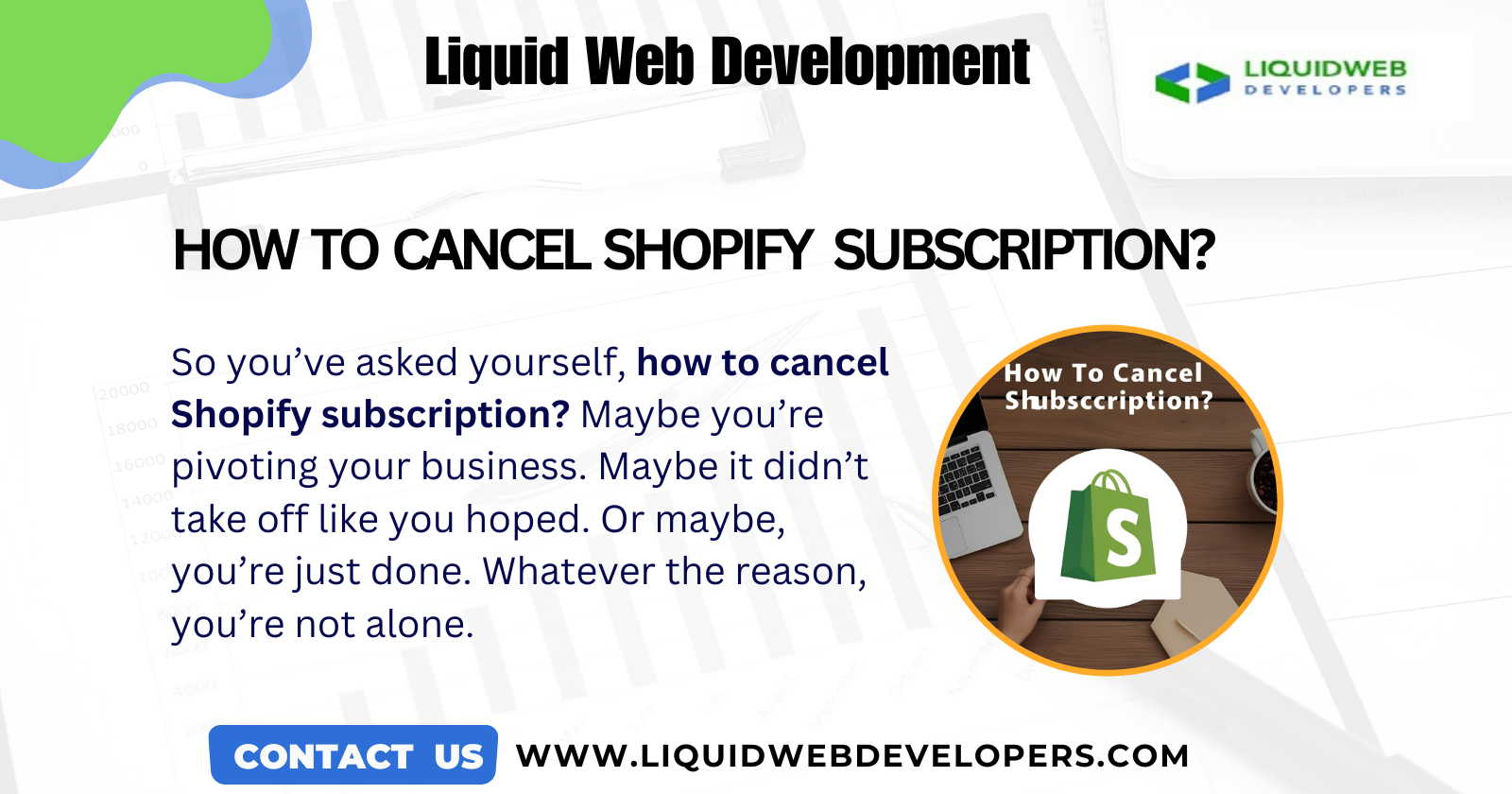How to Cancel Shopify Subscription? A Thoughtful Exit Strategy for Smart Store Owners

If you’re Googling how to cancel Shopify subscription, you’re probably feeling one of three things: overwhelmed, done, or simply ready for what’s next.
Here’s the truth that no one says out loud: canceling your Shopify store doesn’t mean you’ve failed. It means you’re making space—for better business decisions, sharper focus, or even just a break. And that? That’s strategy.
In this post, I’m not just going to show you the cancel button (you could find that on a Shopify help doc). I’m going to walk you through what no one tells you: how to cancel the right way, what to do before you pull the plug, and how to protect your future options.
Let’s explore what canceling actually means—and how to do it without leaving opportunity (or cash) on the table.
Why People Cancel Shopify—And Why It Might Be the Best Thing You Do This Year
Let me start with a little behind-the-scenes: I’ve consulted for DTC brands, drop shippers, agencies, and local boutiques. One client—let’s call her Leah—canceled her store twice. The first time? She was emotionally exhausted. The second? She was pivoting to B2B. Now, she’s running a seven-figure wholesale business—still on Shopify.
So, why do people cancel?
- They started too soon. No audience, no niche, no traffic—just vibes.
- They didn’t expect the tech stack. Shopify’s simplicity still comes with a learning curve.
- They found a better-fit platform. Think WordPress, Magento, or a headless solution.
- They’re rethinking the entire business. Products, branding, margins—all up for review.
The best store owners I know? They hit pause, step back, rework their strategy, and come back stronger. If that’s you, keep reading.
The Right Way to Cancel a Shopify Subscription (Without Regrets)
Let’s get into the nitty-gritty. You didn’t come here to guess. Here’s how to cancel, step by step.
Step 1: Go to Your Shopify Admin
- Log in
- Bottom-left corner: Settings
- Click Plan
- Scroll to find Deactivate store.
Note: If you’ve already paid for a year upfront, Shopify does not offer prorated refunds. Cancelling today doesn’t mean you get your money back—it just means no future charges.Click here to cancel shopify subscription.
Step 2: Choose Pause vs. Cancel
Shopify offers a lesser-known middle ground: Pause and Build. It’s a reduced-fee plan that keeps your backend live but removes checkout.
Use it if:
- You plan to return in the next 3–6 months.
- You want to keep your custom theme, order history, and customer list intact.
- You’re running seasonal products (like holiday drops).
Otherwise, continue with full deactivation.
Step 3: Cancel Any Third-Party Apps and Services Manually
This is where most store owners mess up.
Canceling your Shopify plan doesn’t cancel your app subscriptions or third-party tools.
To avoid unwanted charges:
- Go to Apps > Manage Apps — uninstall anything with recurring billing.
- Visit Settings > Domains — disable auto-renew.
- Disconnect payment gateways like PayPal or Stripe if linked.
A client of mine forgot to cancel Klaviyo—he racked up $70/month for four months after closing the store. Don’t be that guy.
Step 4: Back Up Your Assets (You’ll Thank Yourself Later)
Before you press the final button:
- Export product CSVs
- Save your customer list.
- Download order history
- Back up custom theme code (especially if you hired a dev).
- Download images and brand assets.
Why? Because even though Shopify stores can be reactivated within 2 years, there’s no guarantee your apps, integrations, or exact storefront will look the same.
What Really Happens After You Cancel a Shopify Subscription
This is where things get interesting.
When you cancel:
- Your store goes offline immediately.
- You can still log in and reactivate, but the front end is inaccessible.
- You won’t be charged for your plan moving forward.
- Your domain stays with Shopify unless you transfer it.
- App data may be lost if not exported.
Also, if Shopify changes pricing or features while you’re away, your old plan might not be available when you return.
Is It Better to Cancel or Just Let It Expire?
Short answer: Cancel it yourself. Don’t just let your credit card bounce and hope for the best.
Why?
- Shopify will still try to charge you.
- You might get locked out of your admin dashboard.
- You could be sent to collections (yes, really).
Take 5 minutes. Do it cleanly. Avoid the financial mess.
Migration Tips: Leaving Shopify for Another Platform?
If you’re switching to WooCommerce, Squarespace, BigCommerce, or a custom solution:
- Export everything early (especially URLs for SEO purposes).
- Set up 301 redirects from old Shopify URLs (if your domain is moving).
- Notify customers of your migration.
- Rebuild your email flows, landing pages, and tracking scripts.
Use tools like
- Cart2Cart (automates migration)
- Rewind (for backups)
- Screaming Frog (to track URL structures and avoid SEO drops)
Middle Reminder: Don’t Just Google “How to Cancel Shopify Subscription”—Exit” Like a Founder
You’re not just someone pressing “cancel.” You’re the founder of a store that’s being intentional. You’re protecting your time, your money, and your creative bandwidth.
That’s leadership.
Final Word: How to Cancel Shopify Subscription Without Losing Momentum
To wrap it up, canceling your Shopify subscription doesn’t mean failure. It means making a proactive, thoughtful decision about your next step. That might be building a new brand. Pausing to rest. Or launching something even bigger.
Just make sure you:
✅ Cancel billing for apps and domains.
✅Back up all your assets.
✅ Use Pause and Build if you’re unsure.
✅ Choose to return on your own terms.
So yes, if you came here wondering how to cancel Shopify subscription services, now you know how to do it right.
What’s Your Story?
Have you canceled a Shopify store before? Planning to relaunch? Thinking about switching platforms?
Share your experience in the comments. I’d love to feature real stories from real founders in a future post.
You’re not quitting. You’re evolving.
